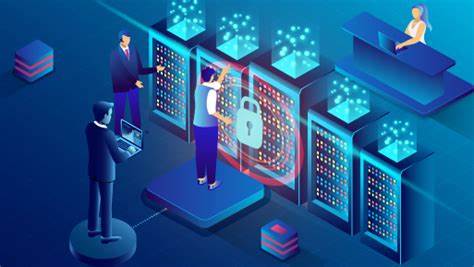
Entrepreneurship is not Easy – Five lessons from my journey so far
No, I am not complaining. To live a life of my choosing and to do work that I love is a blessing indeed and I thank my stars every day for this. An adventure it is, but it is not all fun and games. And the next time one of my ex-colleagues from the corporate world tells me that I am living THE life and I have it all easy and set – be warned, I might just punch you. I was prepared for the hard work, the dedication and the perseverance that is needed to build something valuable from scratch – that’s the easy part. The hard part has been some of the experiences in the past two years since I moved from being an employee to a micropreneur to an entrepreneur – some known, some forgotten, some unique, some learnt – but all experiences that have taught me some tough lessons. Lessons that I hope will help me grow and become more successful as an entrepreneur.
Today’s post is a summary of some of the jottings in my diary in the past year since I launched a full-fledged business – jottings that helped me understand, clarify internally and get clarity to take decisions. As I look back, some of the jottings assume special significance and I believe are worth sharing. So here are the big five lessons from my diary on entrepreneurship in the past year:
Entrepreneurship Lesson #1: A “NO” is not Personal – and I can’t move ahead if I don’t learn to recognise and accept all the nos quickly. I have reached out far and wide in my contacts to get more business. And of course, there are more nos than yeses. And while I am really thankful for the yeses that got me started, it took me some time to accept that a no from my circle of contacts is not a personal rejection. Given all the nos, now I have this background track of a door opening and closing (with various levels of sound effects) playing in my mind whenever I make the pitch. There is the direct “bang” NO – brutal but efficient in the long run. There is the “creaking” half-hearted no – I will see what I can do (no), Call me next month (no), let’s wait for my budgets to be clear (no). And there is the deadly “total silence” no – no response at all to emails, calls, etc. I am a great believer in the power of sales funnel conversion stats – my belief in myself can be shaken but not my belief in the infallibility of numbers and metrics. It took me some time but now I have learnt to be happy with a no. The quicker I finish my quota of nos, the faster I can reach the yeses in wait for me.
Entrepreneurship Lesson #2: Every Hire is not a Great hire – With all my experience in hiring and managing people, this is one mistake that hit me hard. I have been very careful in building my initial team – this is the team that after all will determine what the company culture will be. The team that will walk the talk of the mission, vision and values and set examples for the rest to follow. It hurt when I realised that even after careful screening, I had hired someone who did not fit in with the core culture of my company. It hurt more when “sitting down” and having a discussion with the team member did not work. I had to take rapid action to let the person go. And that is the lesson – that even after being very careful, there will still be people who may be great performers but are not “right” for the organization. Hire slow and fire fast – strong words but very important ones for a startup.
Entrepreneurship Lesson #3: Every Customer is not a Great customer – And there will be times when I need to let a customer go. I have to let go of the temptation to add customers indiscriminately (and especially at the time when I can count all my customers on fingers of my hands). Being small and starting up, I needed to be careful about where I am directing efforts towards. And my fingers were burnt badly when I spent a lot of time and money working to satisfy a customer who though was known to me in my earlier life, I was not very comfortable taking on. There was a conflict in values when I initially assessed the opportunity and I should have listened to my gut feel/instincts that this conflict cannot be ignored and things will not work out. After a lot of back and forth and heartburn – it didn’t. Lesson learnt – I would rather stay small than compromise on what I need my business to stand for.
Entrepreneurship Lesson #4: Cash on Invoice is not Cash in the Bank – Can’t believe it even now, that I with all my revenue and cash flow management experience was sliding into this trap of false security. But I was – serves me right for building castles in the air and nearly building a few on the ground based on all the $$$ that I had raised invoices for. One big bill paid and my castles fell apart. And common sense came back. I now plan my costs and investments only based on the cash in the bank. Being self-funded, this is quite tricky but absolutely necessary for my peace of mind and my company’s financial well-being. That’s another thing about entrepreneurship – money balance in bank is the last thing on my mind before I go to sleep every night. Money was never a priority for me when I was in a job – never thought I would see this day or night 🙂
Entrepreneurship Lesson #5: Expect the Unexpected – I made an excellent business plan in December and had to throw out more than 50% of the planning on customers, revenue streams and sources by February end. Solid depression for a week (how could my planning have been so flawed? Who was I kidding? Is it time to wind up even before it starts properly?) And then another revenue stream opened up. A customer was served up to me on a plate by a connection who I did not expect it from (thank you so much A). And I was back in the running :). Lesson learnt – things change. And things change rapidly. Have a Plan B (and C) in place. Be flexible and go with the flow. A plan is great but if the real world throws up some opportunities or challenges, be ready to grab them or fight them. And to prepare for change I now expect it and experiment with change by shaking things up and around a little bit more often in my business.
I have a long way to go yet and a lot to do. But if success is measured in terms of personal growth and experiences gathered, my first year as an entrepreneur has been quite successful. I am happy in the now and my team is happy in the now too 🙂 – what else could I ask for? Right – more money in the bank would be a good ask too, but I will get there.
Intrapreneurs, entrepreneurs and entrepreneurs-in-the-making – what do you think? Any advice for me – anything I should know now before I burn my fingers? Help me by sharing your thoughts and wisdom with me.
Pic courtesy – Flying_Solo_by_Chocoreaper



